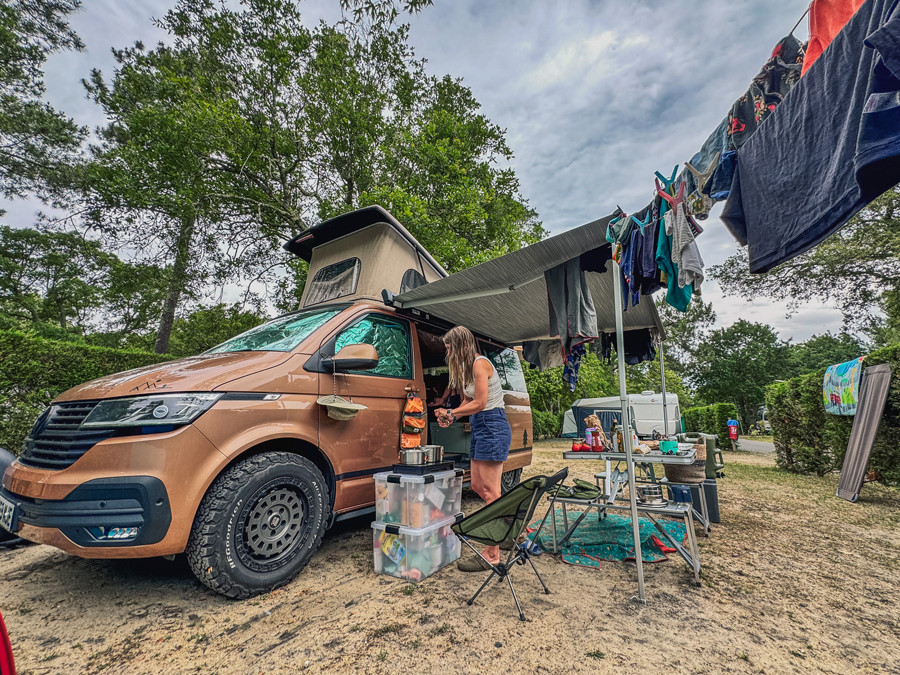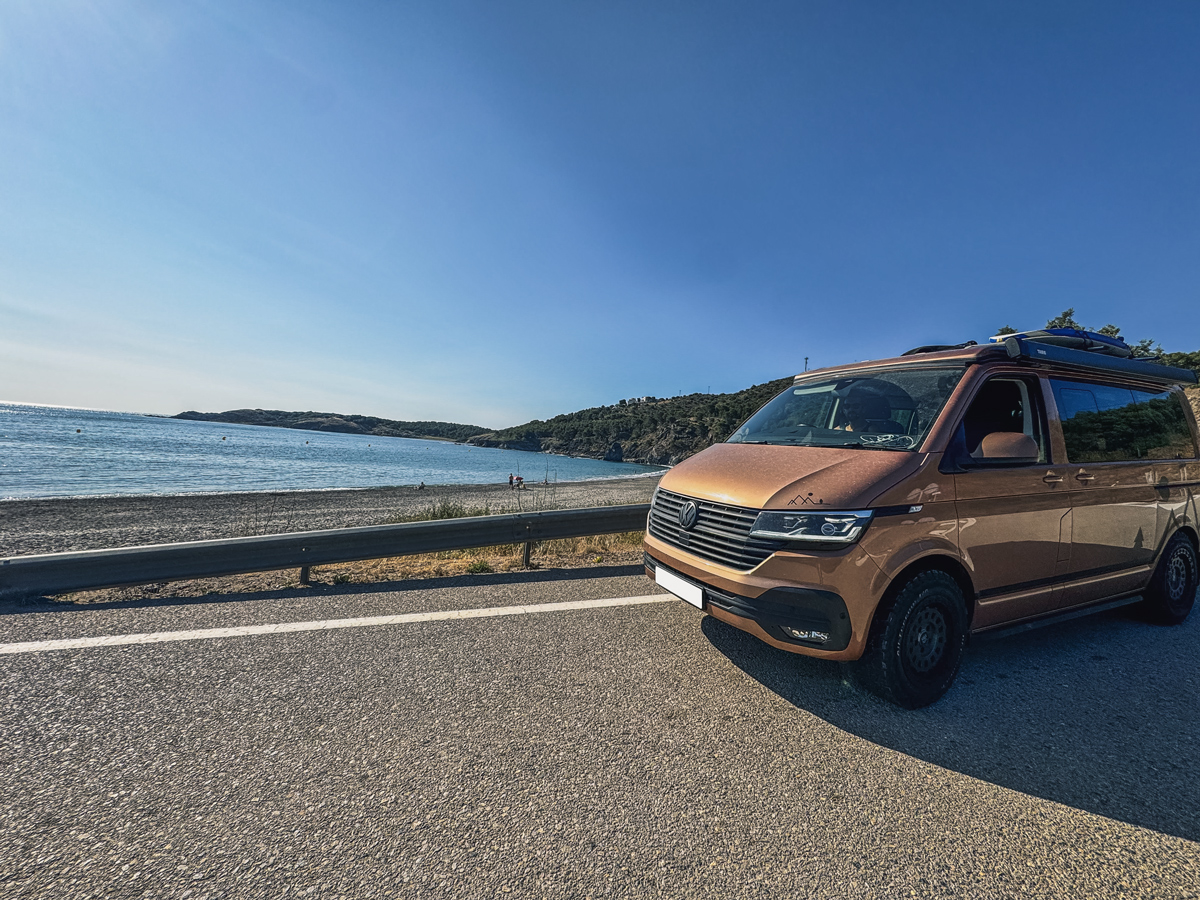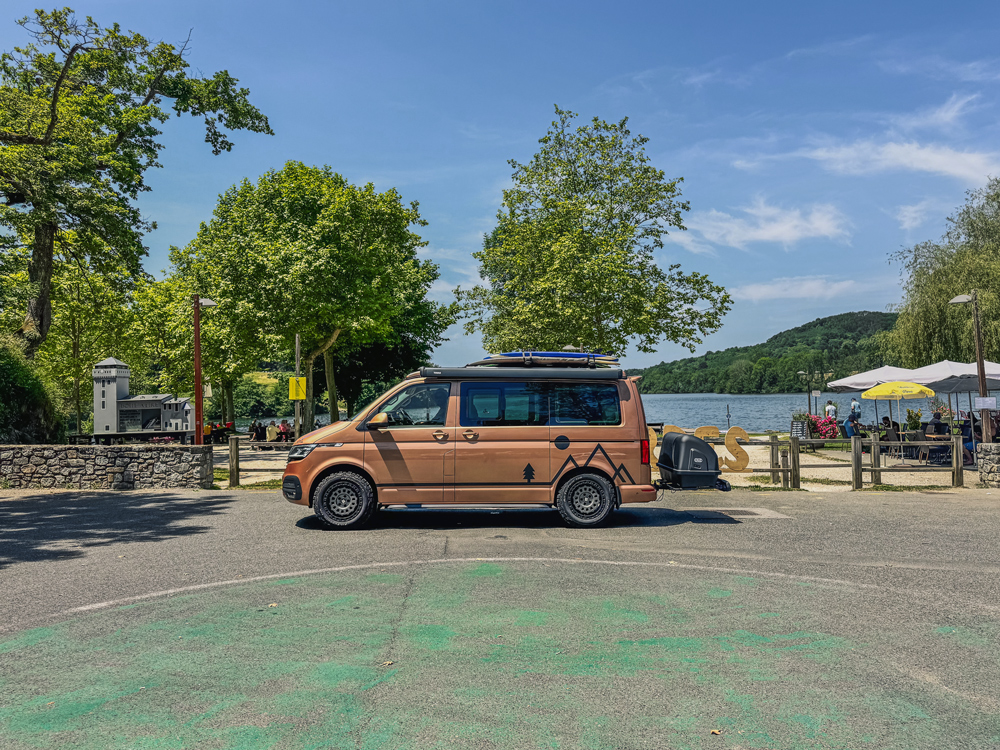Gas-Free Campervan Setup: Why We Chose the Clayton Power 3000
When planning our latest campervan adventure, we made a big decision: to go completely gas-free: no bottles to carry, no gas lockers to install, and no fiddly connections to worry about. Instead, we opted for a modern, eco-friendly power solution – the Clayton Power 3000 unit, paired with a 160Ah lithium battery.
This system gave us the freedom to travel without relying on traditional gas systems, while still powering everything we needed for cooking, charging, and day-to-day van life. Here’s how it worked out for us on the road.
Why Choose Clayton Power for a Gas-Free Campervan?

The Clayton Power 3000 was an easy choice for us. It provides reliable off-grid energy with all the benefits of a lithium setup:
- No gas storage needed – freeing up space and avoiding safety concerns.
- High-capacity 160Ah lithium battery – plenty of energy storage for daily use.
- Simple 230V hook-up integration – boosting the system’s efficiency when campsites include electric in the pitch price.
To keep the system topped up, we added a MIPV 280W solar panel. Admittedly, our four surfboards created a bit of shade over the panel, but it still performed well. On average, we could go around three days with minimal solar input before needing to hook up. Since we were driving every 2–4 days, the alternator charging kept things balanced, too.
Cooking in a Gas-Free Campervan
 Going gas-free didn’t mean compromising on meals. We used a Vango twin portable induction hob for all our cooking. It’s lightweight, inexpensive, and super easy to clean – exactly what you want in a campervan.
Going gas-free didn’t mean compromising on meals. We used a Vango twin portable induction hob for all our cooking. It’s lightweight, inexpensive, and super easy to clean – exactly what you want in a campervan.
Alongside the hob, we had a few essentials plugged in regularly:
- Aplicool chest fridge – efficient cooling with very low power draw, running 24/7.
- Toaster – around 700W, perfect for quick breakfasts when hooked up or after driving.
- Electric kettle – much quicker and simpler than boiling water on the hob.
And of course, all the usual gadgets – phones, iPads, laptops, and the kids’ Toniebox – stayed charged without any issue.
Managing Off-Grid Campervan Power
 One of the most important lessons we learned is that a gas-free campervan system works brilliantly if you manage it with a little awareness. Not all appliances are equal when it comes to power draw, so knowing what uses more energy – and when to use it – makes the setup stress-free.
One of the most important lessons we learned is that a gas-free campervan system works brilliantly if you manage it with a little awareness. Not all appliances are equal when it comes to power draw, so knowing what uses more energy – and when to use it – makes the setup stress-free.
- High-draw items (like the toaster, kettle, or induction hob) are best used when you’re on a campsite hook-up or soon after driving, when the battery has had a solid charge from the alternator.
- Low-draw items (such as the fridge, lights, or charging phones and tablets) can run continuously without issue.
- Timing matters – if you know you’ll be staying put for a few days with little solar gain, it’s worth spacing out the use of high-power appliances or planning to recharge with a short drive.
By managing power in this way, we found we never once struggled. Our fridge stayed cold 24/7, the kids’ gadgets were always charged, and we could still enjoy morning toast and cups of tea without worrying about running flat.
Top Tips for a Gas-Free Campervan Setup
 If you’re thinking of going gas-free in your campervan, here are a few quick takeaways from our experience:
If you’re thinking of going gas-free in your campervan, here are a few quick takeaways from our experience:
✅ Pair your power unit with a decent-sized solar panel to stay topped up.
✅ Use hook-ups when included in your pitch price – it gives you more freedom with high-draw items.
✅ Learn which appliances are high draw vs. low draw so you can plan usage.
✅ Drive every few days if you’re running bigger appliances regularly – the alternator will recharge your battery.
✅ Keep your system simple – the fewer moving parts, the less to worry about on the road.
Final Thoughts: Is a Gas-Free Campervan Worth It?

Absolutely. For us, the Clayton Power 3000 with solar proved to be the perfect solution. It kept our van lightweight, safe, and simple to use, while still powering everything from cooking and refrigeration to gadgets and lighting.
If you’re considering a gas-free campervan conversion, we’d highly recommend looking at this setup. With a little awareness of power management, you’ll find that modern lithium and solar systems can more than handle the demands of van life – leaving you free to focus on what really matters: adventure, spontaneity, and making memories on the road.
